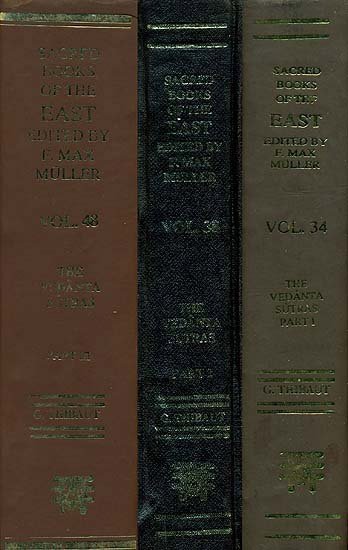Brahma Sutras (Ramanuja)
by George Thibaut | 1904 | 275,953 words | ISBN-10: 8120801350 | ISBN-13: 9788120801356
The English translation of the Brahma Sutras (also, Vedanta Sutras) with commentary by Ramanuja (known as the Sri Bhasya). The Brahmasutra expounds the essential philosophy of the Upanishads which, primarily revolving around the knowledge of Brahman and Atman, represents the foundation of Vedanta. Ramanjua’s interpretation of these sutras from a V...
Sutra 3.3.5
5. (Meditation) thus being equal, there is combination (of guṇas); on account of non-difference of purport in the case of what subserves injunction.
The meditation in all Vedānta-texts thus being the same, the qualities mentioned in one text are to be combined with those mentioned in another; 'on account of non-difference of purport in the case of what subserves injunction.' We find that in connexion with certain injunctions of meditation—such as the meditation on Vaiśvānara, or the small ether within the heart—the text of some individual Vedānta-book mentions certain secondary matters (qualities, guṇa) which subserve that meditation; and as these guṇas are connected with the meditation they are to be comprised in it, so that they may accomplish their aim, i.e. of subserving the meditation. For the same reason therefore we have to enclose in the meditation guṇas mentioned in other Vedānta-texts; for being also connected with the meditation they subserve it in the same way.—Here terminates the adhikaraṇa of 'what is intimated by all Vedānta-texts.
